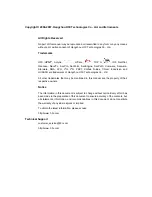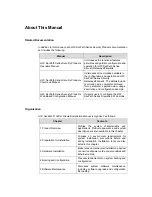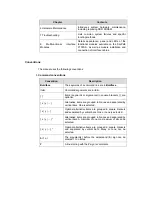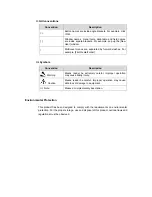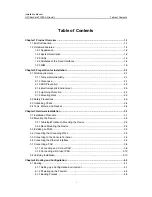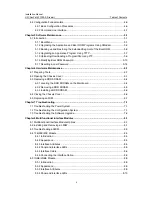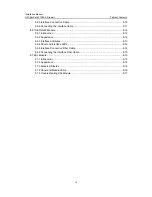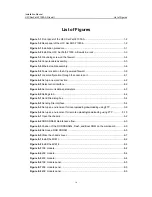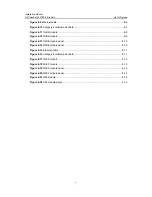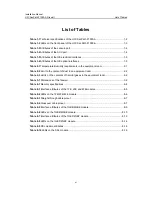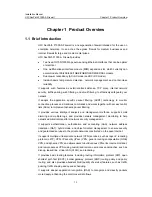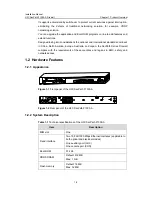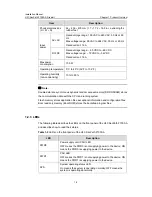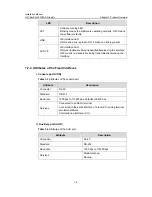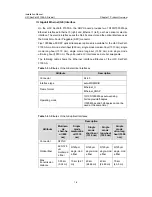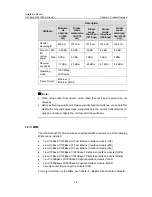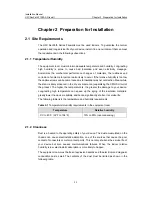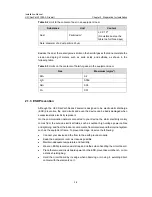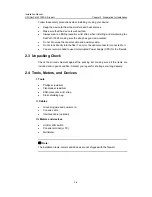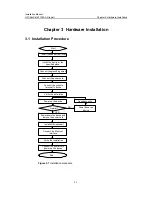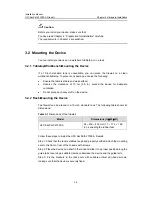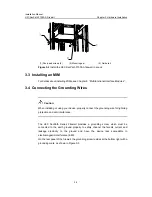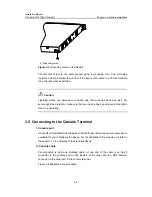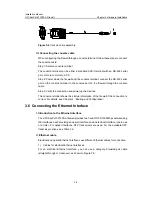
Installation Manual
H3C SecPath F1000-A Firewall
Chapter 1 Product Overview
1-1
Chapter 1 Product Overview
1.1 Brief Introduction
H3C SecPath F1000-A Firewall is a new-generation firewall intended for the use on
enterprise networks. It can act as the egress firewall for medium businesses and
internal firewall for large and medium enterprises.
H3C SecPath F1000-A Firewall provides:
z
Two fixed 10/100/1000 Mbps auto-sensing Ethernet interfaces that can be optical
or electrical
z
One multifunctional interface module (MIM) expansion slot, which currently can
accommodate 1FE/2FE/4FE/1GBE/2GBE/1GEF/2GEF/SSL module
z
Dual-power redundancy (AC+AC model and DC+DC model)
z
Inside-chassis temperature detection, network management and carrier-class
reliability
It supports such features as external attack defense, TCP proxy, internal network
security, traffic policing, web filtering, and email filtering, to effectively safeguard your
network.
It adopts the application specific packet filtering (ASPF) technology to monitor
connection process and malicious commands and works together with access control
lists (ACLs) to implement dynamic packet filtering.
It provides various intelligent analysis and management methods, supports email
alarming and multiple logs, and provides network management monitoring to help
network administrators perform network security management.
It supports authentication, authorization and accounting (AAA), network address
translation (NAT), hybrid mode, and object oriented management to ensure security
and guaranteed services to the private networks constructed on the open Internet.
It supports multiple virtual private network (VPN) services, such as layer 2 tunneling
protocol (L2TP) VPN, IP security (IPsec) VPN, generic routing encapsulation (GRE)
VPN, and dynamic VPN, and allows users to build various VPNs, like Internet, Intranet,
and remote access VPNs using customized remote-user access approaches, such as
dial-up, leased line, virtual LAN (VLAN), and tunneling.
It provides basic routing features, including routing information protocol (RIP), open
shortest path first (OSPF), border gateway protocol (BGP) routing policy and policy
routing, and also provides abundant QoS (quality of service) features, such as traffic
policing, traffic shaping and queue scheduling.
It supports deeper application recognition (DAR) to recognize and classify packets
more deeply, enhancing the control over data flows.


